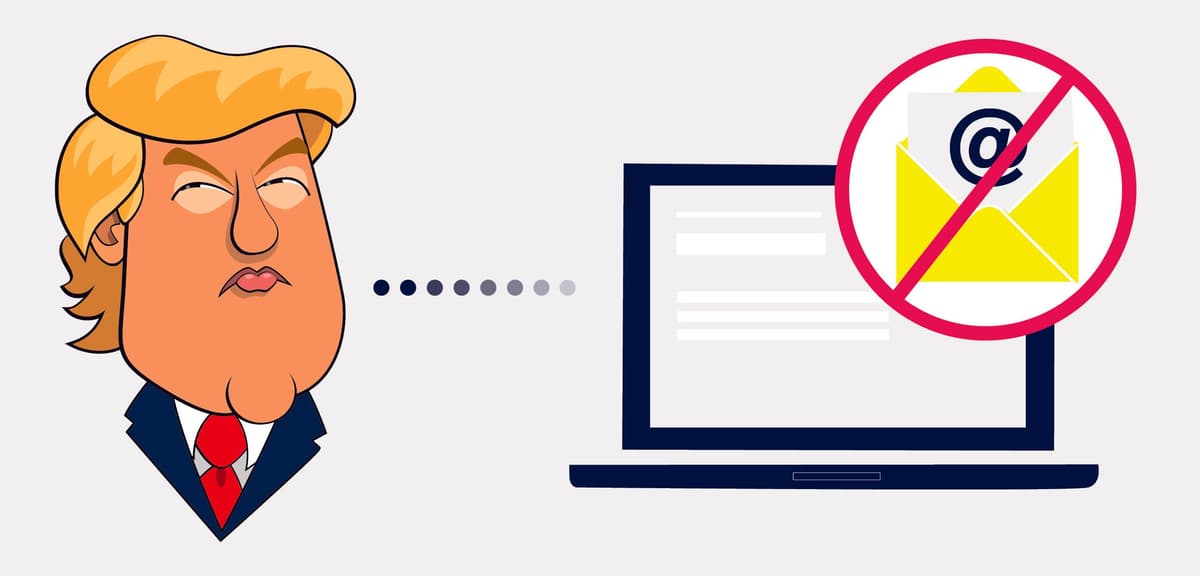The Donald Trump Guide to Thoughtless Email Marketing
Published on July 07, 2016/Last edited on July 07, 2016/5 min read


Todd Grennan
Content Production Principal, Content Marketing at BrazeWhen it comes to effectively reaching your customers with email outreach, there’s a new guideline that marketers should take to heart: whatever Donald Trump is doing, do the opposite.
Last month, following media reports that Trump, the presumptive Republican presidential nominee, had fallen significantly behind his Democratic rival, Hillary Clinton, in fundraising, the Trump campaign sent out its first email soliciting donations. Now, normally there would be nothing notable about a political campaign using email to ask its supporters for donation: it happens all the time. But the way that the Trump campaign handled that first fundraising email was so problematic that it’s spurred multiple complaints to the Federal Election Commission (FEC) and an international incident involving legislators in at least five countries.
Okay, so what did the Trump campaign get wrong?
1. Poor email list management
While many of the people who were sent Trump’s fundraising email were political supporters who had given the campaign their email addresses, media reports suggest that a large number of emails were sent to individuals who never knowingly shared their email addresses with Trump. It’s unclear whether those email addresses were purchased from email brokers or were left over from an old list that was dusted off and used without considering whether the individuals on it were likely to be interested in this sort of outreach. But either way, sending email outreach to individuals who haven’t agreed to receive it is a big misstep.
By sending cold email solicitations to people who hadn’t subscribed to their email list, the Trump campaign was taking a risk—one that didn’t pay off. Only 12% of recipients opened the message, a rate that’s more than 47% lower than the benchmark for political emails, suggesting that the cold outreach drove down opens for that email.
Advice on avoiding spam traps from Braze Senior Customer Success Manager Nicole Codd
Because the Trump email was a solicitation for a political campaign, it’s exempt from restrictions on email spam included in the U.S.’s CAN-SPAM legislation and Canada’s CASL anti-spam law. But if a marketer had done the same thing as part of their email outreach, they would be liable for fines up to $16,000 for each violation of U.S. law and up to $10 million Canadian for each CASL violation. For a lot of brands, the consequences of this kind of thoughtless email outreach might well be bankruptcy.
2. Lack of IP warming
According to PoliticsUSA, 60% of the messages sent in the Trump campaign’s first fundraising email ended up in recipient’s spam folders, significantly reducing the reach and effectiveness of that outreach.
While previous emails from the Trump campaign had gone out to supporters from email addresses associated with DonaldTrump.com, the fundraising email was instead sent from a new domain, DonaldJTrump.com. When a large volume of email is sent from a cold email address (that is, one that has not previously sent a similar number of messages), ISPs will often view that outreach skeptically, significantly increasing the odds that your emails will be marked as spam and blocked.
To avoid this fate in your own email marketing, it’s important to “warm” the IP address associated with your email sends before sending a heavy volume of messages. While Appboy and other marketing platforms can warm IP addresses for marketers, it’s also possible to do it manually by slowly scaling up the volume of your email sends and targeting highly engaged customers. By demonstrating that your outreach is wanted and valuable, you can improve your email delivery reputation over time and increase the chances that your email will reach everyone you’re looking to engage.
3. No audience segmentation
While good email list management would have prevented the Trump campaign from sending messages to individuals who didn’t subscribe, it’s not clear whether it would have been sufficient to ward off the two FEC complaints that were recently filed against it. Under U.S. law, political campaigns are not allowed to solicit or accept donations from foreign nationals; however, Trump’s campaign sent emails to a large number of foreign individuals, reportedly including every member of the parliaments of the UK and Iceland.
If the Trump campaign had segmented their email list and sent the fundraising email only to people with U.S. email addresses and individuals whose most recent location was within the U.S., they would have avoided messaging most of the foreign nationals on their list. With additional segmentation, they could have identified individuals who were particularly likely to make a donation and personalized those messages to increase the odds that they engaged with their outreach. Instead, they triggered formal complaints from multiple campaign watchdog groups and outraged criticism from legislators all over the world.
Don’t do what Donny Don’t does
It’s rare for email marketing to burst into the mainstream like this. But while the whole incident has been a major embarrassment for the Trump campaign, it’s also a great opportunity for marketers to learn from Trump’s mistakes and hopefully avoid repeating them. By practicing good email marketing etiquette and taking advantage of audience segmentation, you can improve the odds that your outreach reaches the right people—and avoid finding yourself in a Trump-esque email-related debacle.

Be Absolutely Engaging.™
Sign up for regular updates from Braze.
Related Content
View the Blog
The new inbox reality: How iOS changes are reshaping email marketing

Aparna Prasad

Experience optimization: Turning data insights into better journeys

Team Braze

December 2025 Bonfire Marketer of the Month: Jagex’s Emma Oliver
